61 Coleoptera – Polyphaga I
Polyphaga
Polyphaga is the largest suborder of beetles, and includes the vast majority of the order. We will cover a number of the most common families found in northern BC, but you will have to key the specimens that you plan to submit in your collection assignment very carefully. Make sure you review the features that distinguish Adephaga from Polyphaga.
Silphidae
Silphidae, or carrion beetles, are not uncommon in student collections. The most commonly collected species have orange markings on their black elytra. We have also collected some with black, ridged, soft-looking elytra in Prince George in our pitfall traps. Note the clubbed antennae, short elytra that do not completely cover the abdomen, and five-segmented tarsi. These beetles often have phoretic mites attached. The mites “hitchhike” on the beetles to reach new carrion food sources.
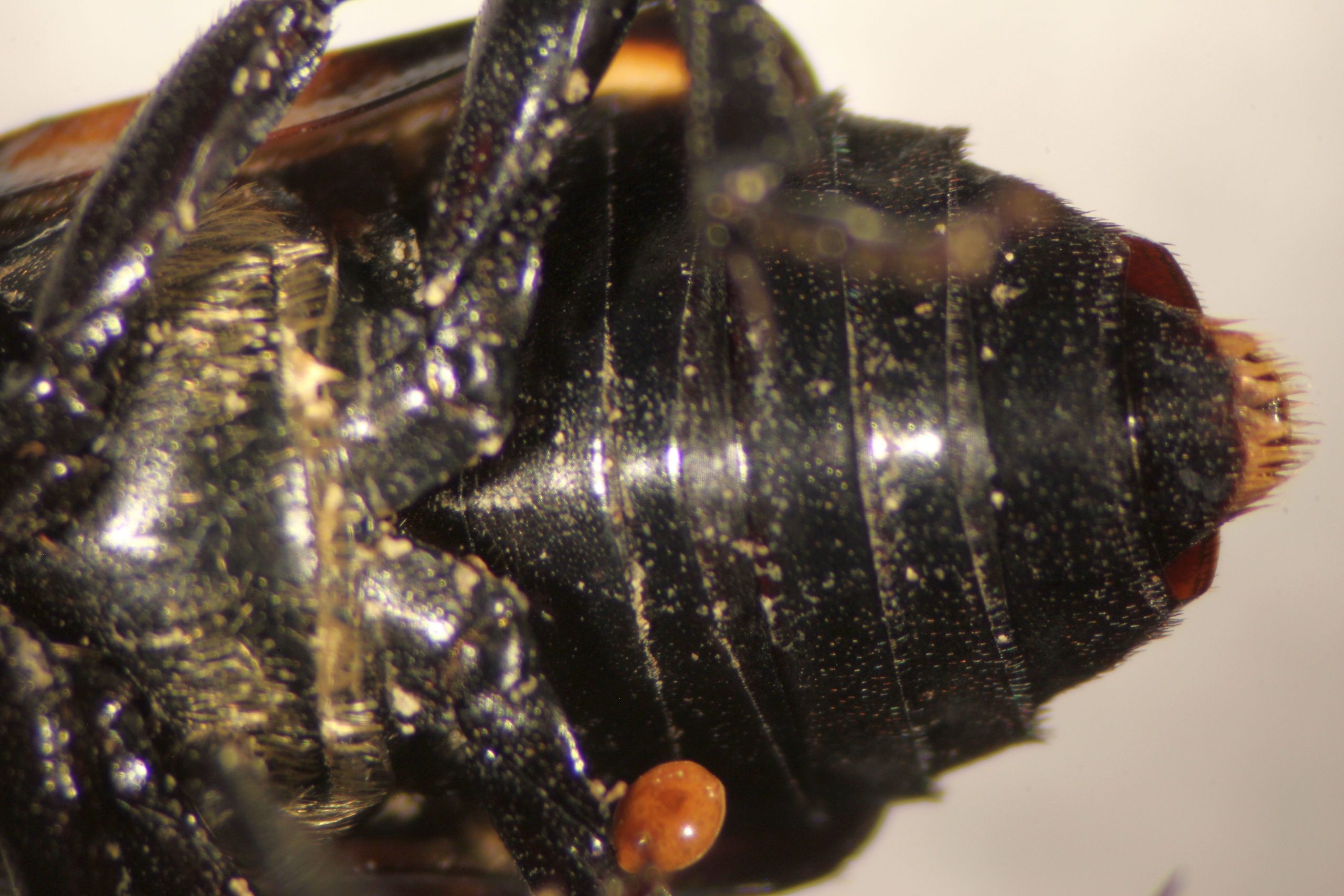
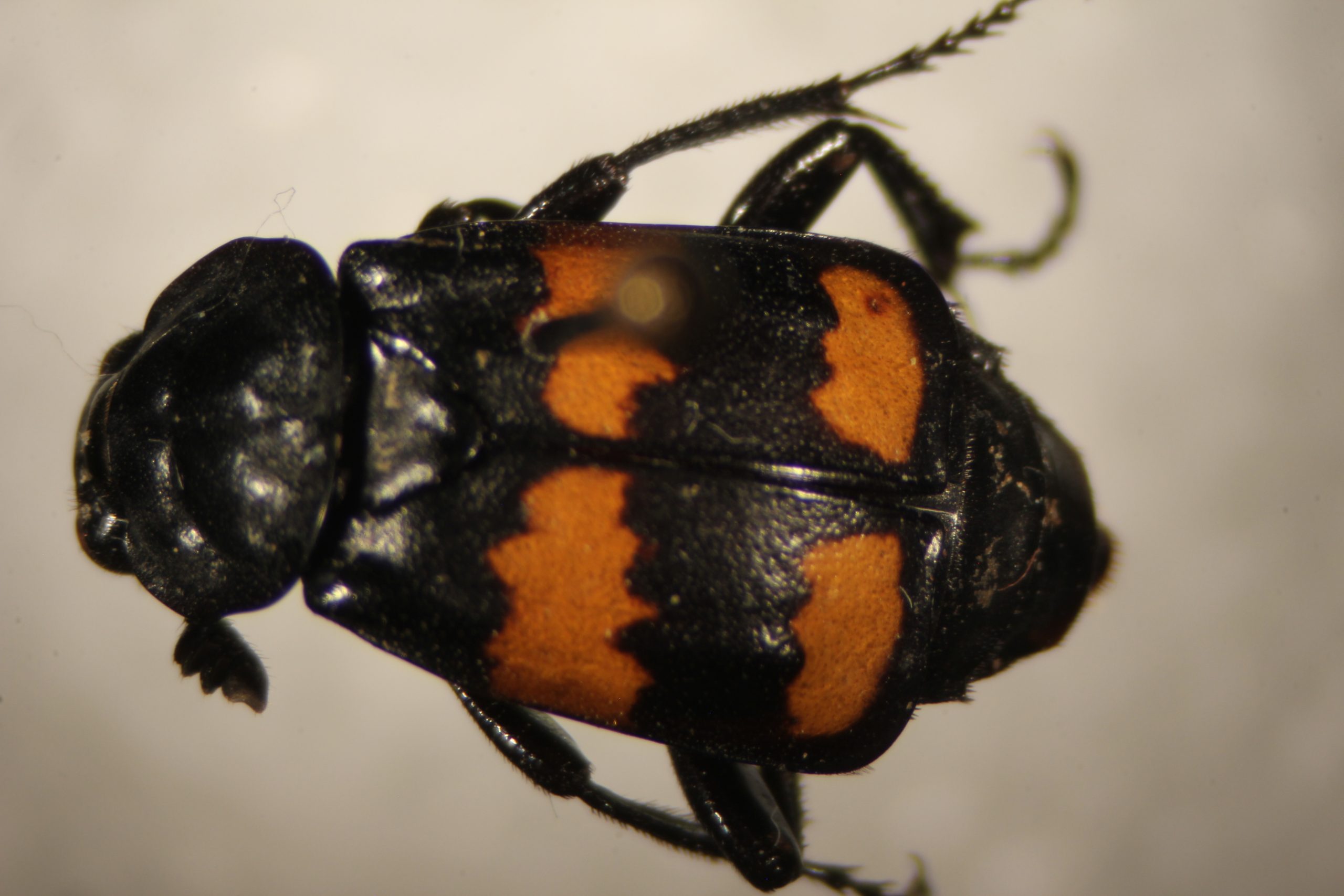
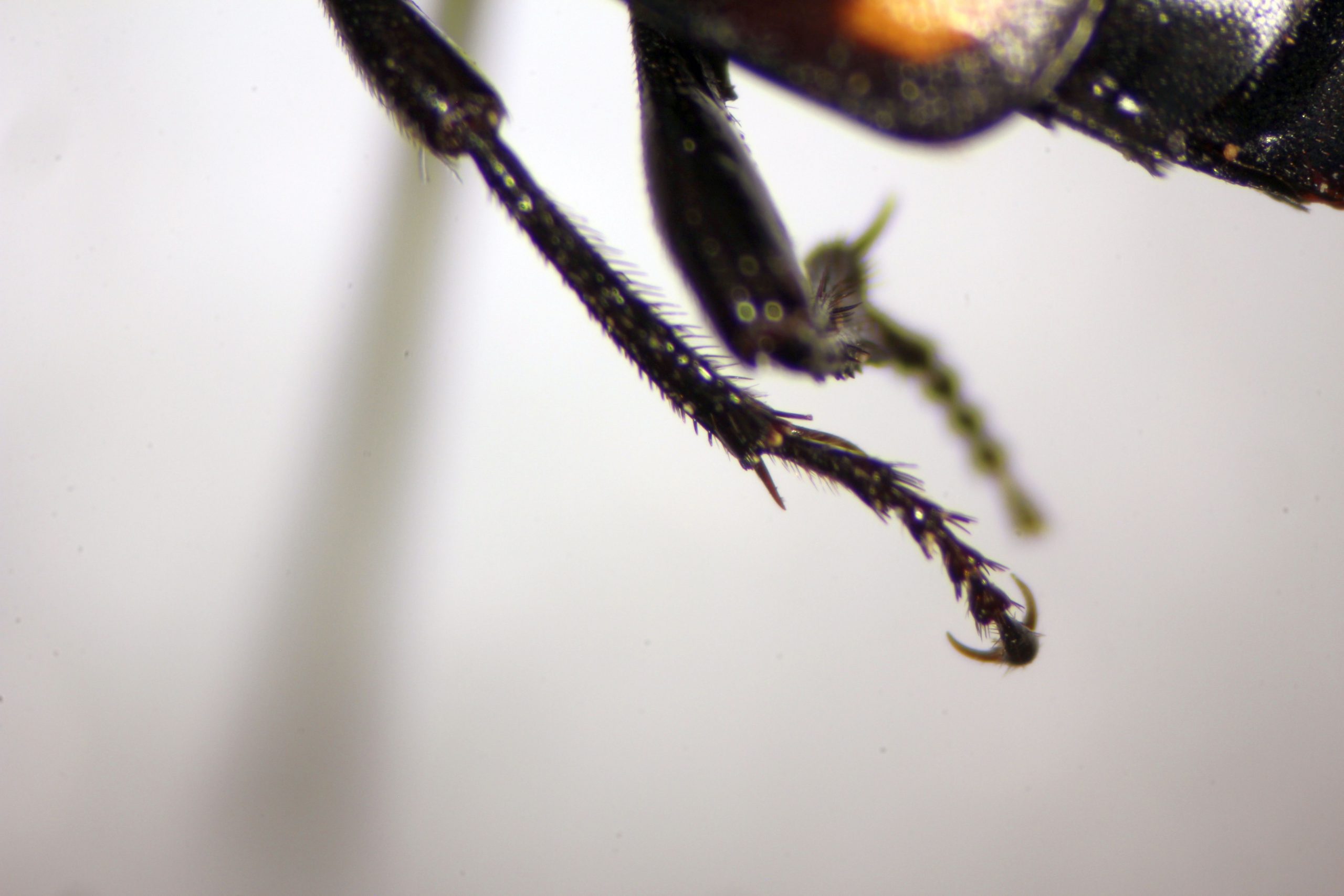
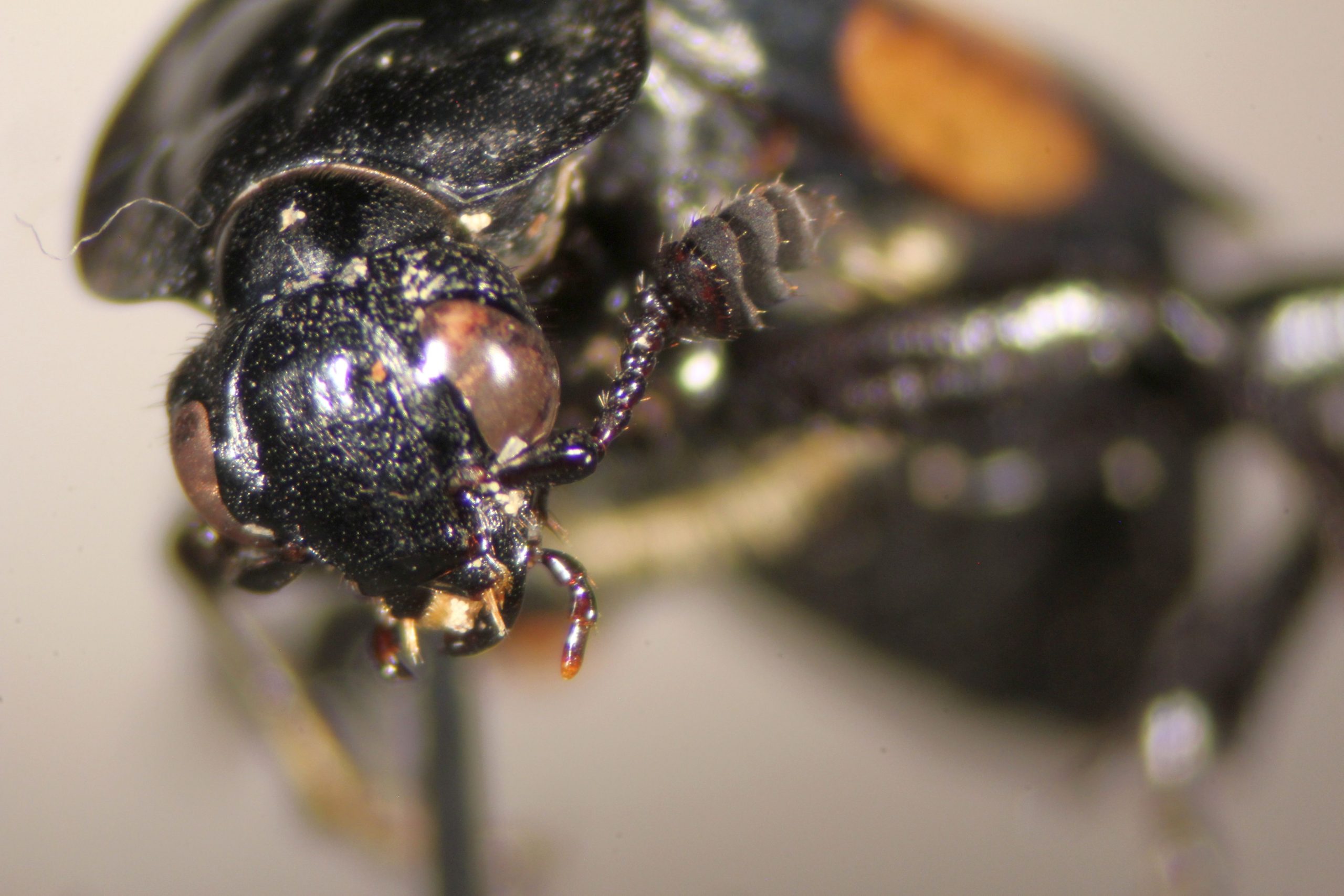
Staphylinidae
Staphylinidae, or rove beetles, is another family with short elytra that do not cover the entire abdomen. Rove beetles are also often associated with carrion, but are a diverse group with many feeding strategies. Rove beetles also have five-segmented tarsi; their short elytra will usually provide you the first clue to their identity. When you are collecting, note that some species will curl the tip of their abdomens up to mimic stinging.
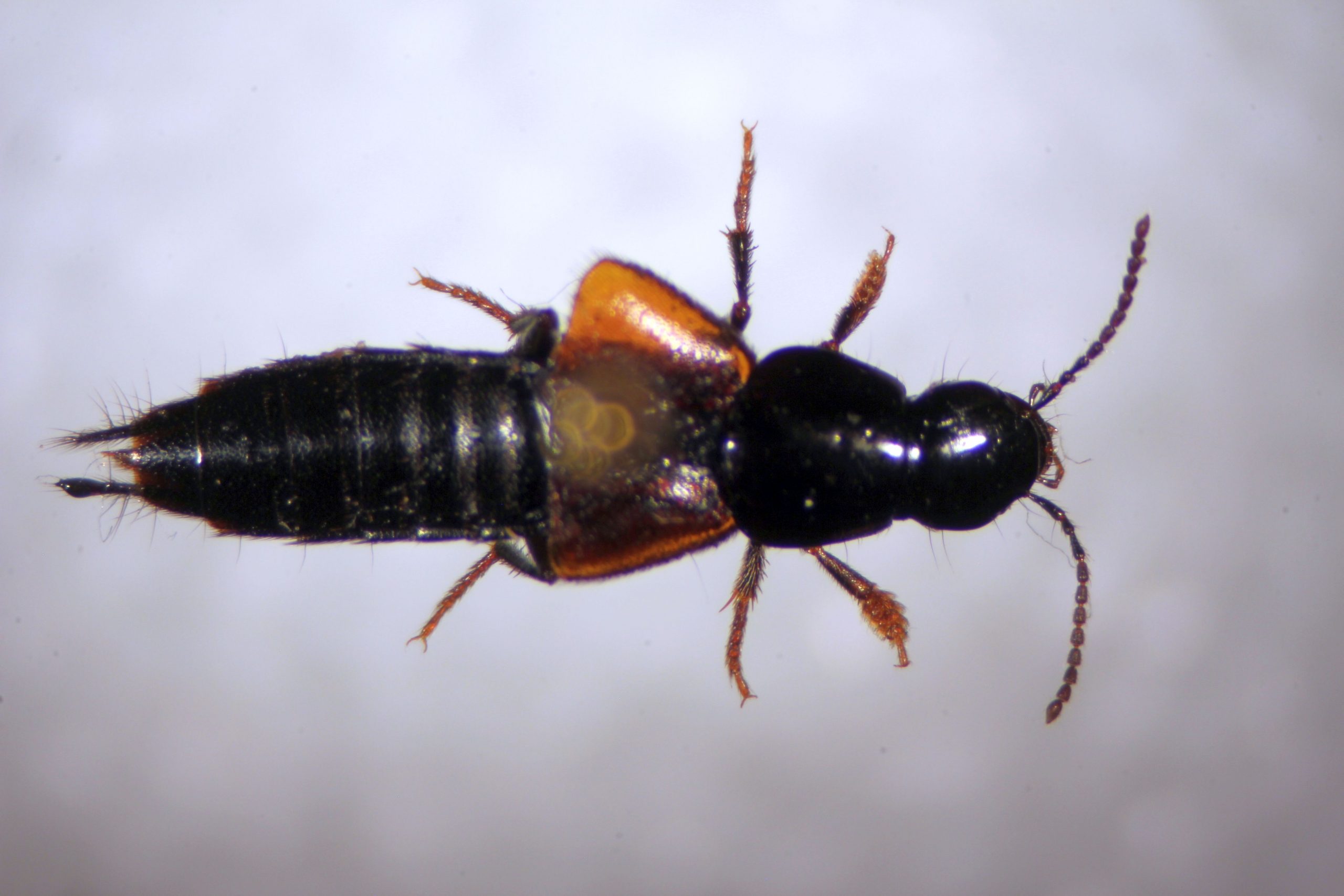
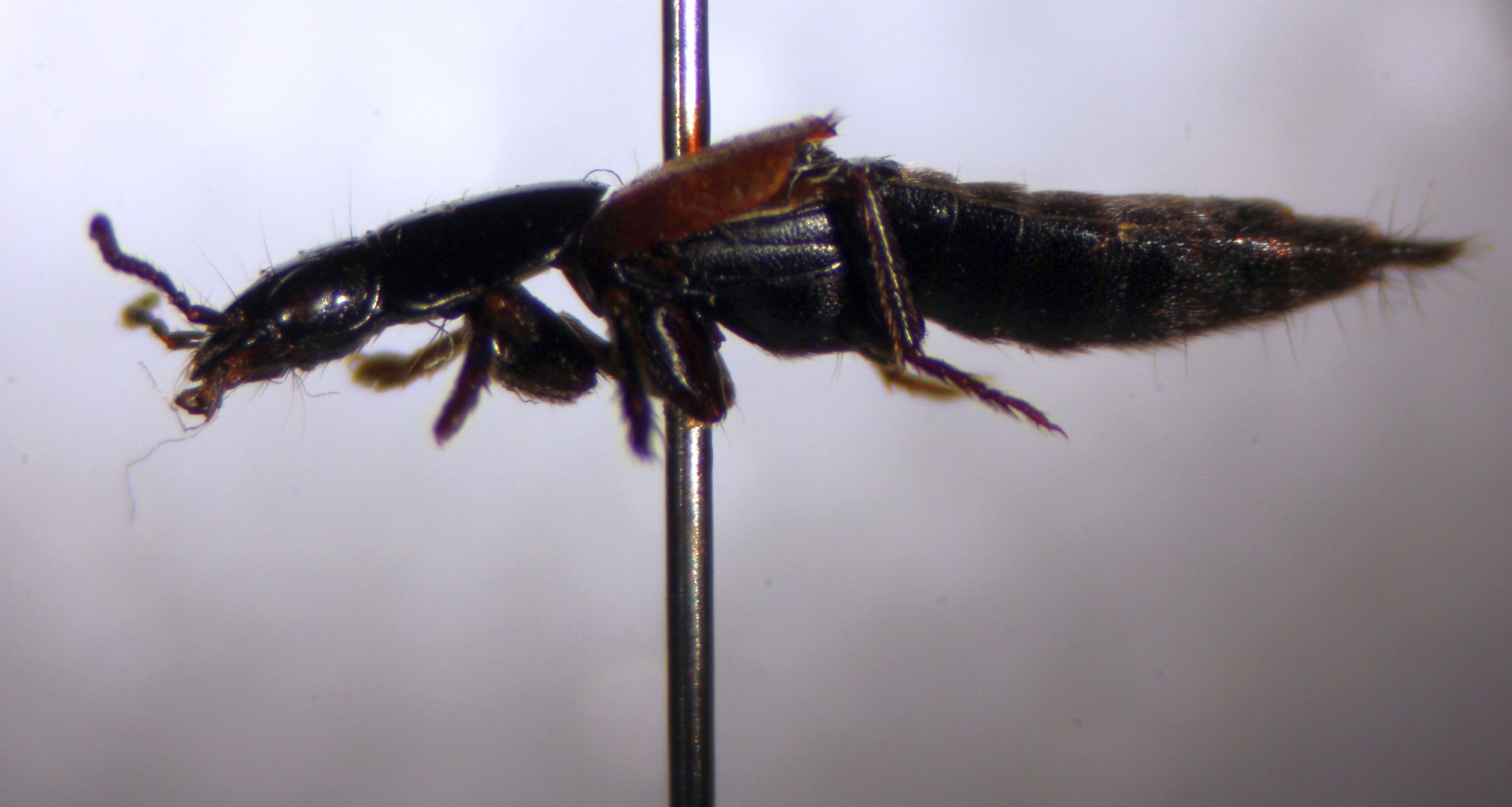
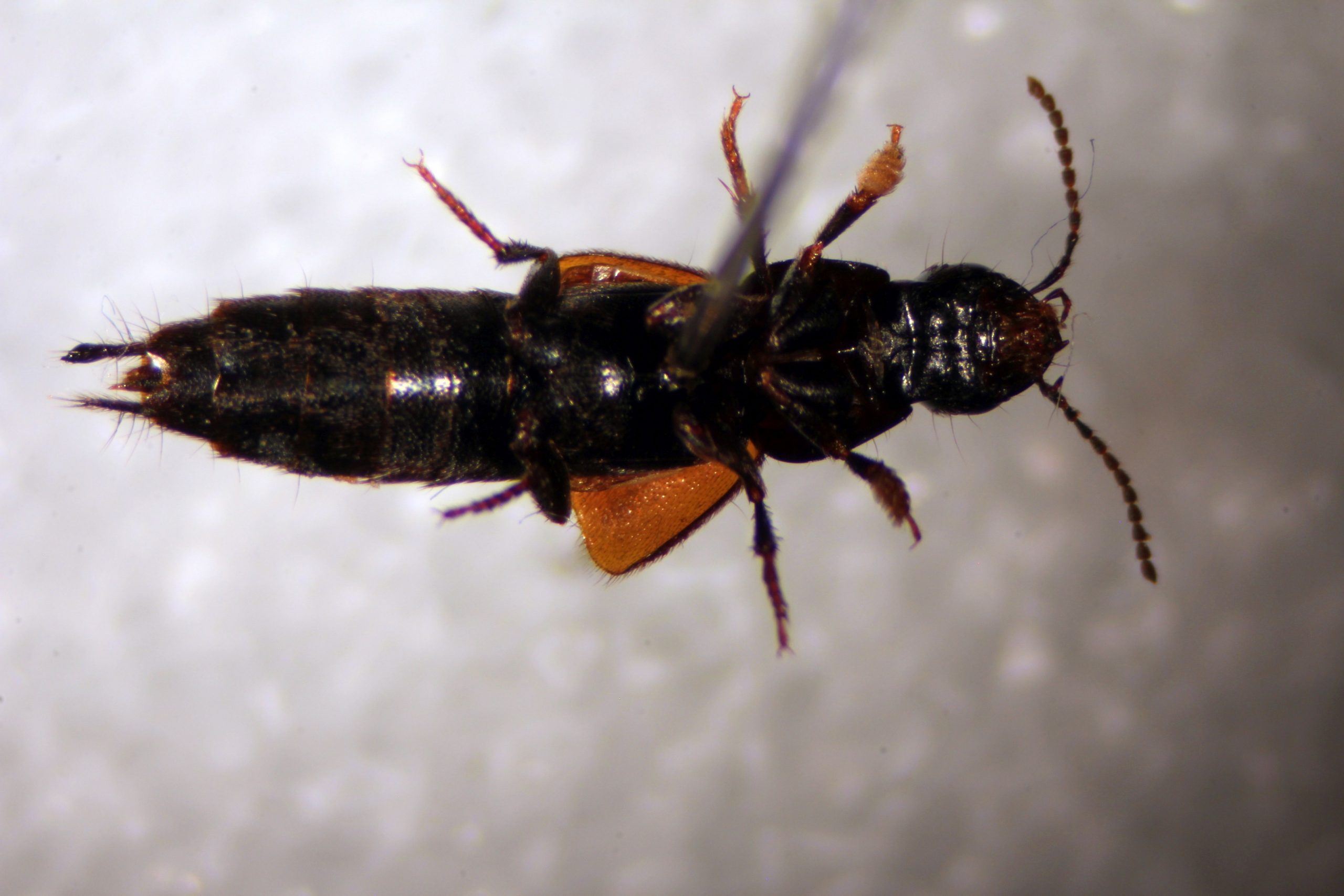
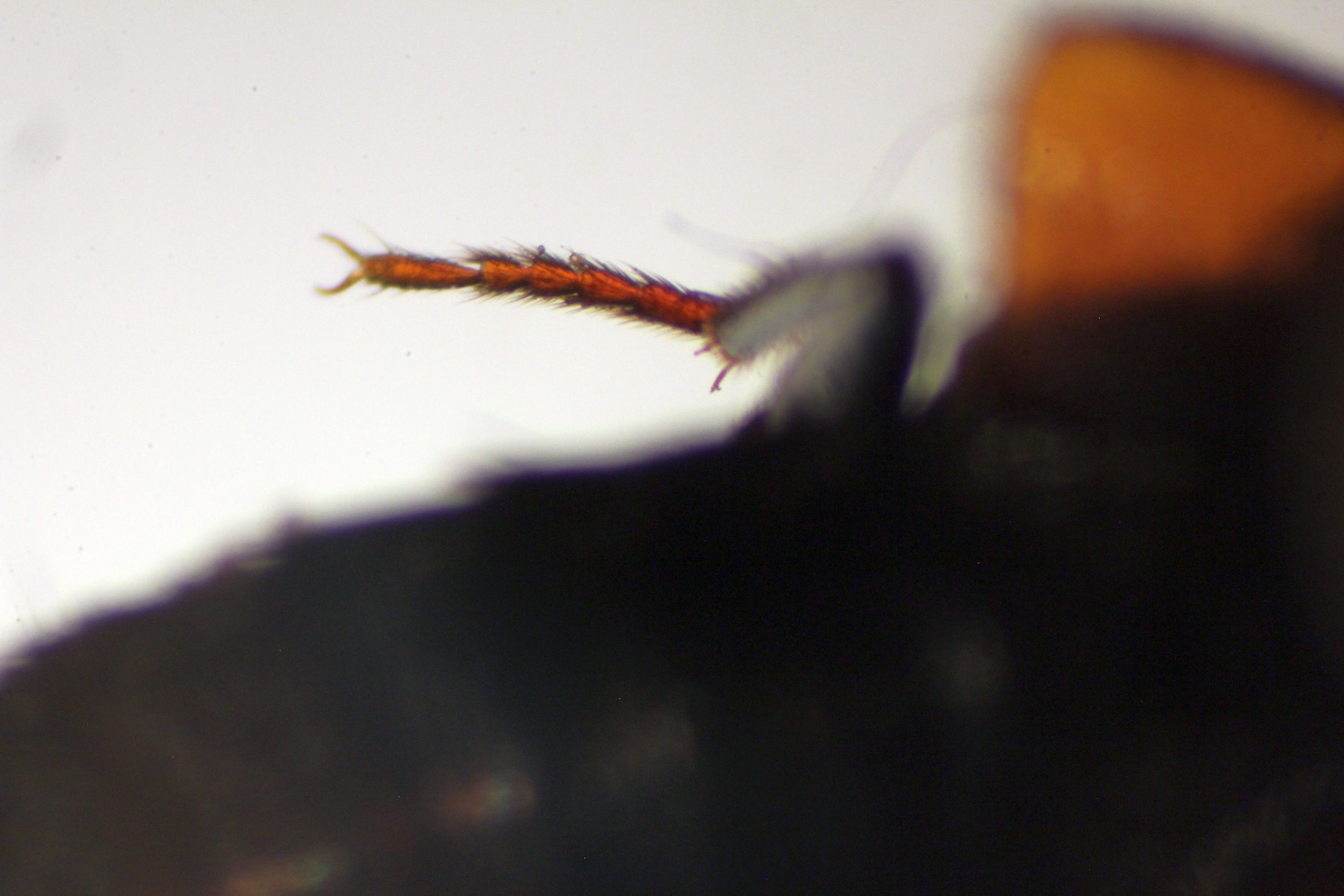
Lucanidae
Lucanidae are the stag beetles. We have some in the collection, but none are available for you to key. Male beetles (but not the females) have large, modified mandibles, which they use in dominance displays such as wrestling matches. You should be able to distinguish these from the next family, Scarabaeidae.
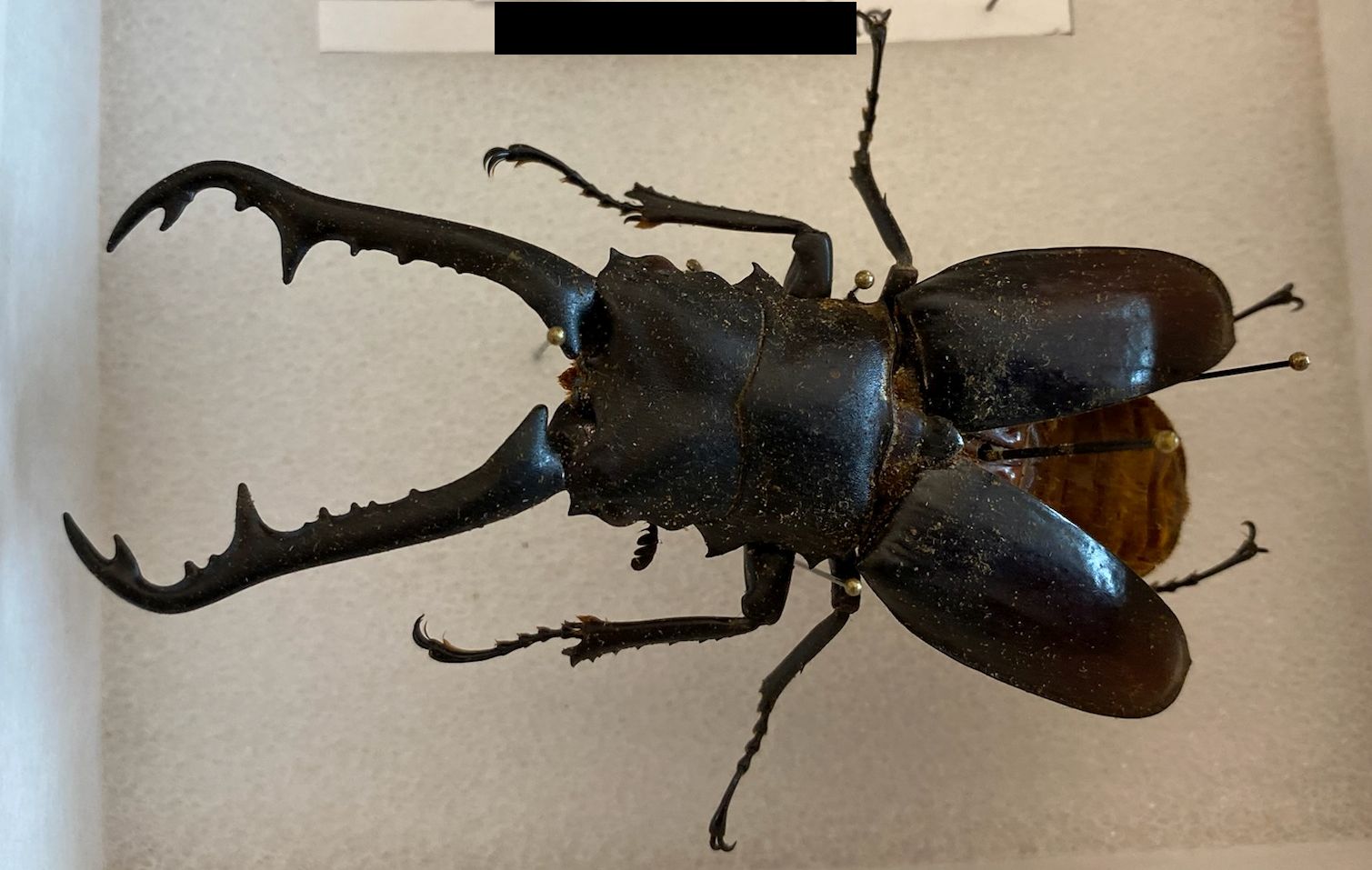
Scarabaeidae
Scarab beetles, in the family Scarabaeidae, include a diverse assortment of beetles: rhinoceros beetles, goliath beetles, dung beetles, and June beetles are all members of this family. Many are large, shiny, and/or brightly-coloured. They are herbivorous, with the larvae usually feeding on roots. Some groups are, therefore, important plant pests. In the photos, you should be able to see the five-segmented tarsi and the characteristic lamellate antennae. I have also included a photo of the BC species of rhinoceros beetle (not large, but still a rhinoceros beetle!)
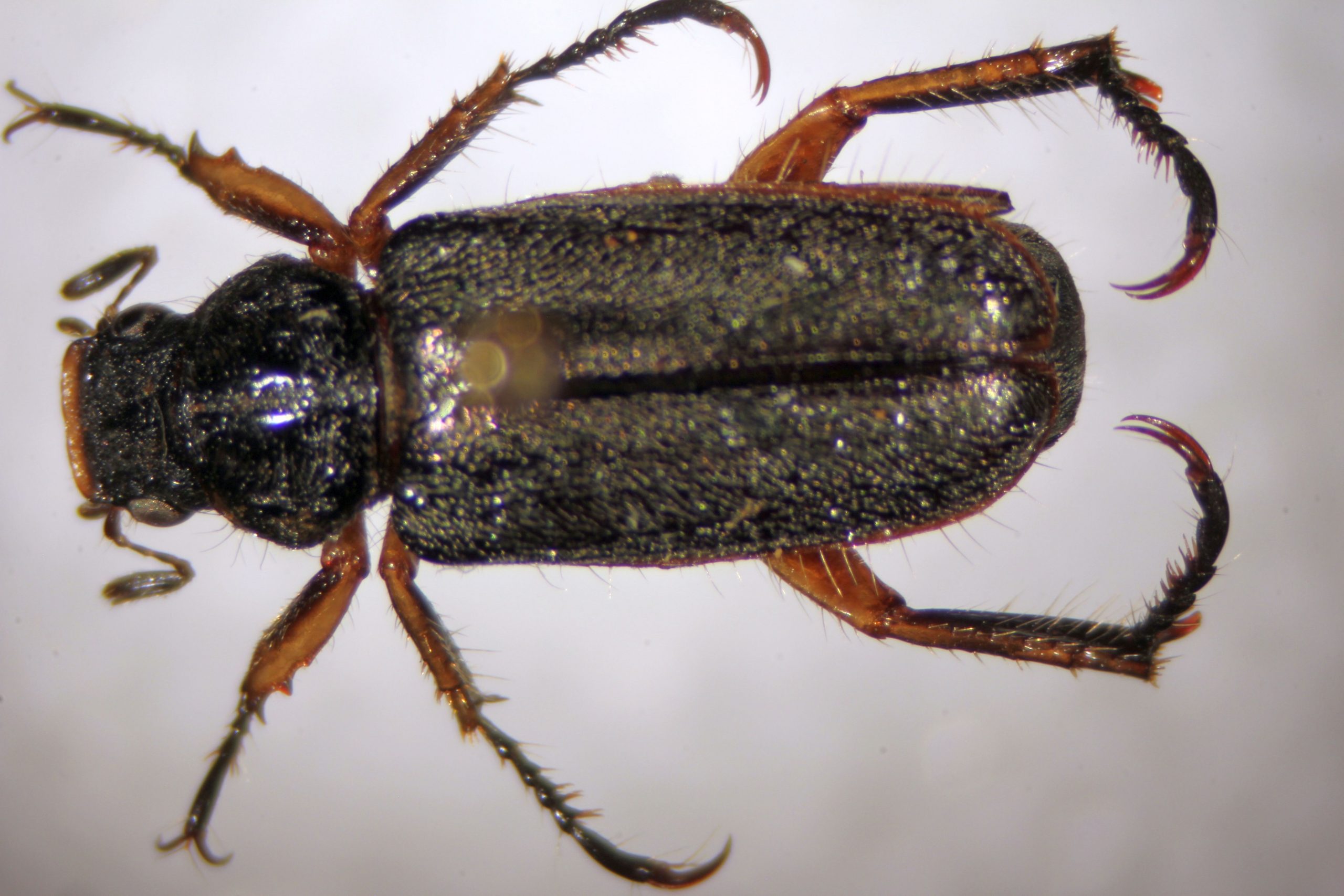
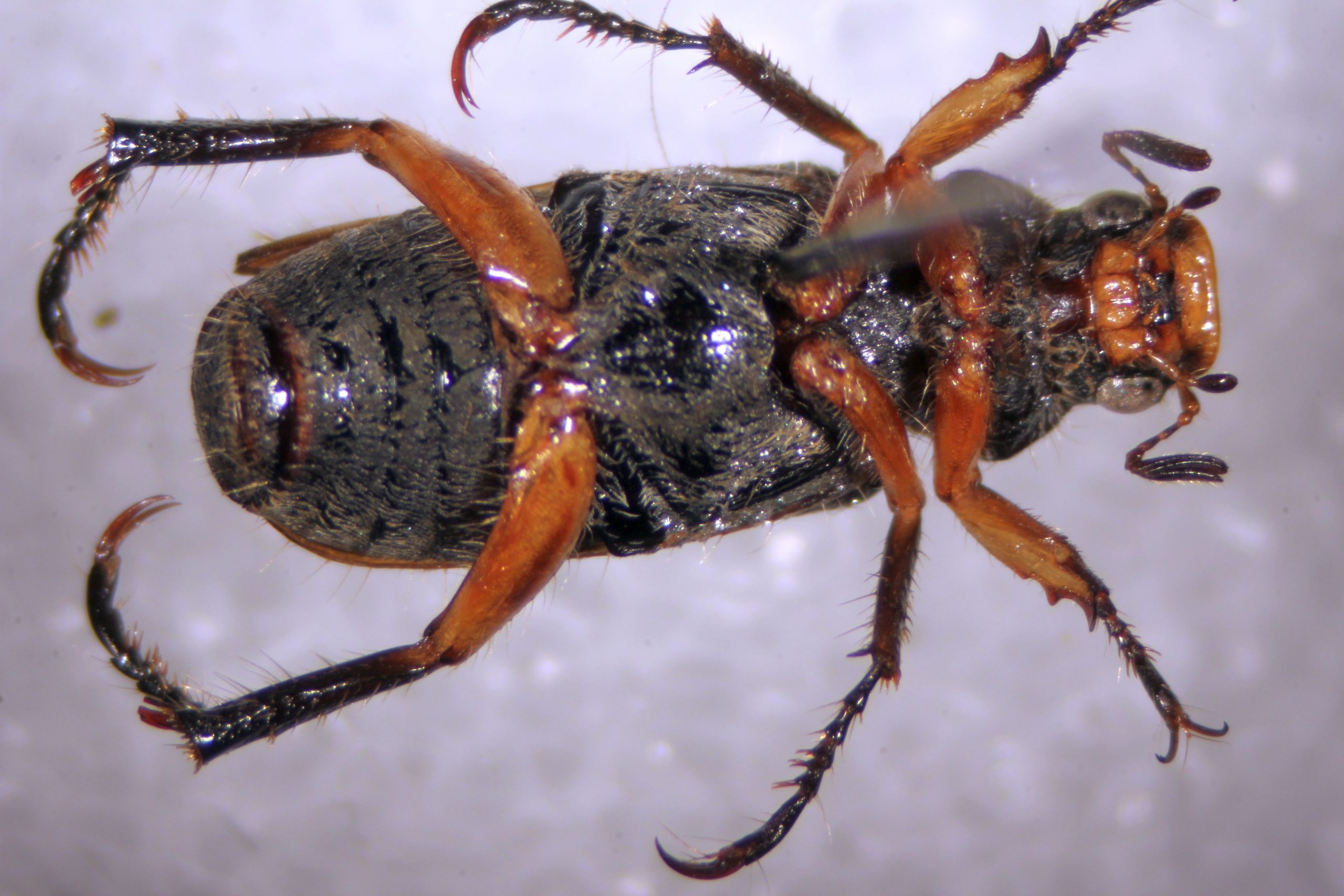

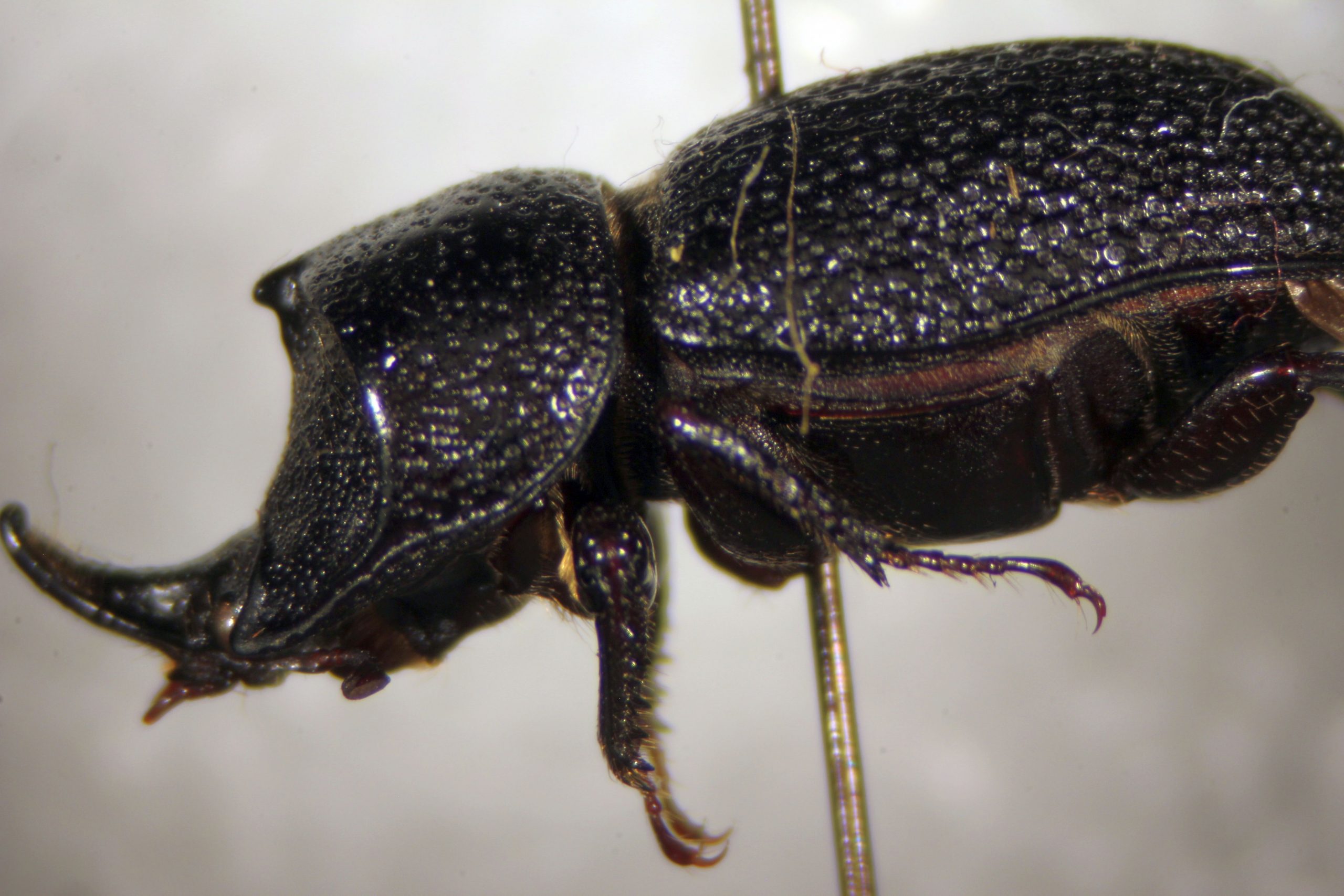
Buprestidae
Buprestidae have a number of common names, including metallic woodborers, flat-headed woodborers, and jewel beetles. As you might expect, many members of this family have showy, bright, metallic colouration, some more dramatic than others. Their elytra have been used in jewelry and in textiles as ornamentation. Adults lay their eggs on the bark of dead and dying trees and, when the larvae hatch, they spend some time feeding in the cambium. They then bore into the sapwood and heartwood. The thoracic segments of the larvae are dorsoventrally flattened, leading to the name flat-headed borers. Several species are pyrophilic, ovipositing in fire-killed or damaged trees. Some are important pests of wood, especially wood in service. Very long larval life-spans are possible, leading to the emergence of adult beetles from e.g. furniture up to 50 years after the wood was harvested. Adults have a characteristic elliptical body shape, and are also elliptical in cross-section. When they emerge from the wood where they pupated they leave a diagnostic elliptical emergence hole. They can be easy to confuse with the next family, Elateridae, and a few other families that we do not cover in this course.
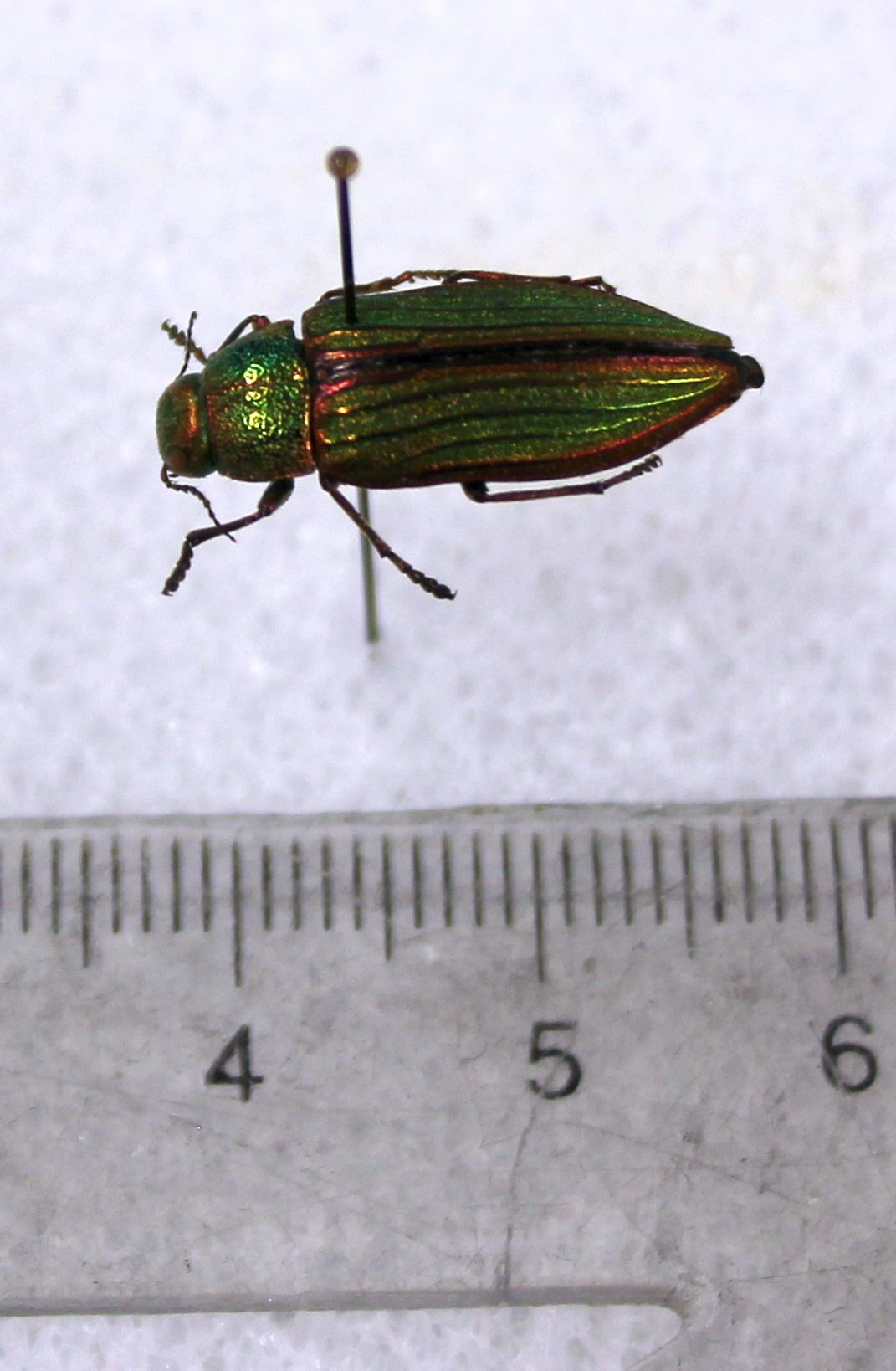
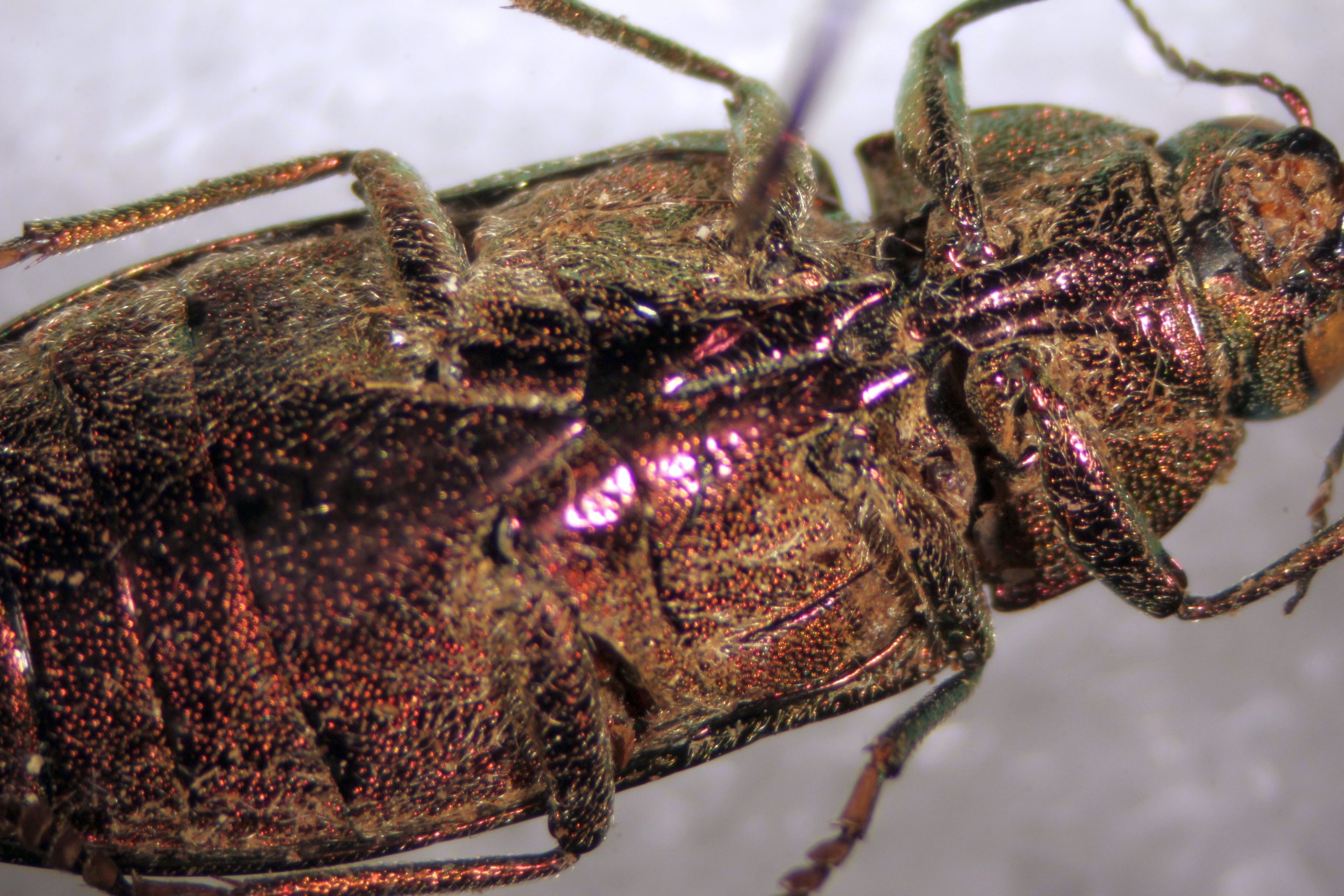
6 Elateridae
Elateridae are the click beetles. Their body shape is similar to that of Buprestidae. Most Elateridae are characterized by having a sclerotized spine on the underside of the prosternum that fits into a notch on the mesosternum. If the beetle ends up on its dorsal surface, this spine can be forcibly snapped out of the notch, producing an audible “click”, and propelling the beetle into the air. Buprestidae lack this peg. The posterior corners of the pronotum are usually extended backwards into points in Elateridae, but not in Buprestidae. Most Elateridae are phytophagous as adults, but may be phytophagous, saprophagous, or even opportunistic predators as larvae. A few species, called “wireworms”, are significant agricultural pests as larvae.
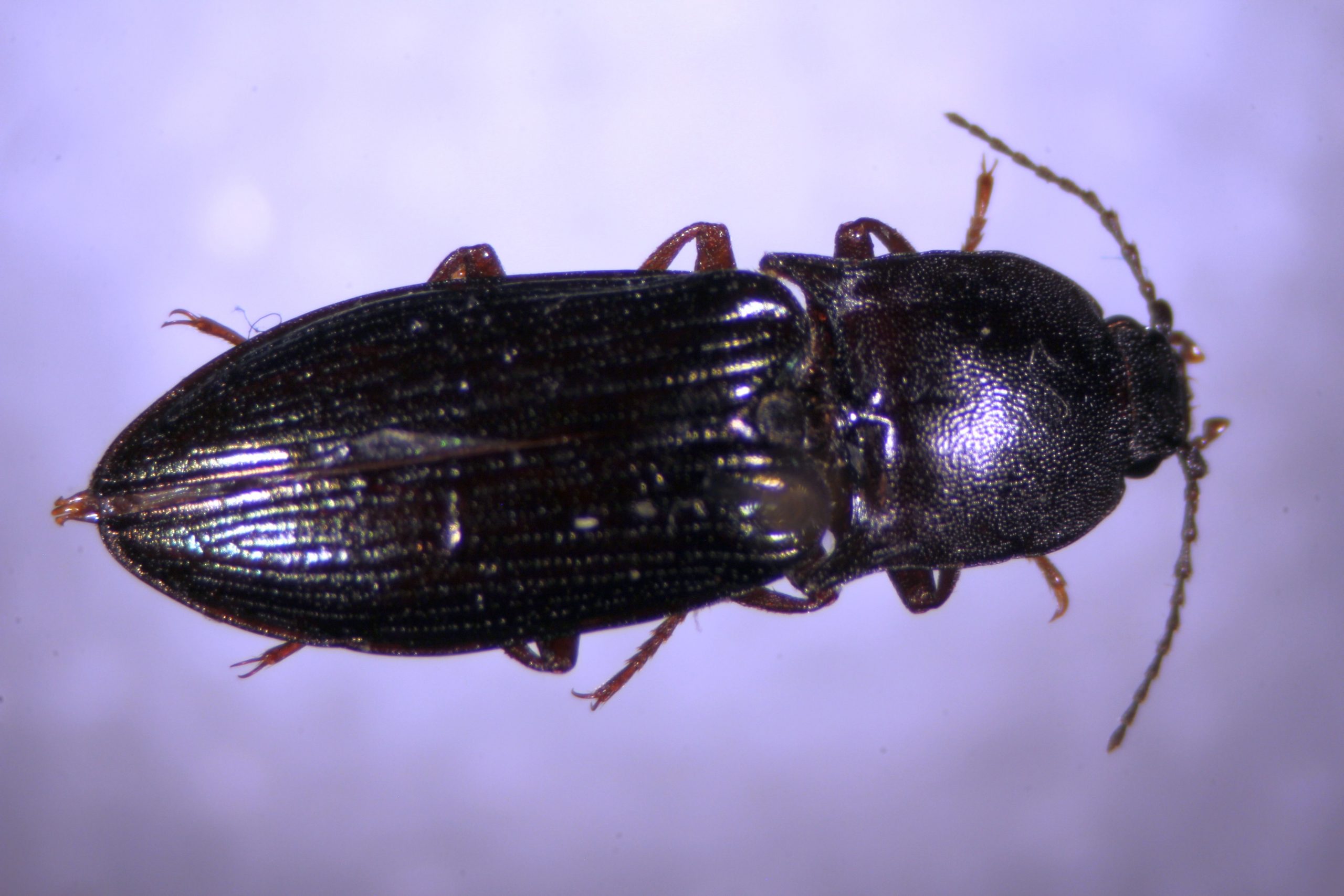
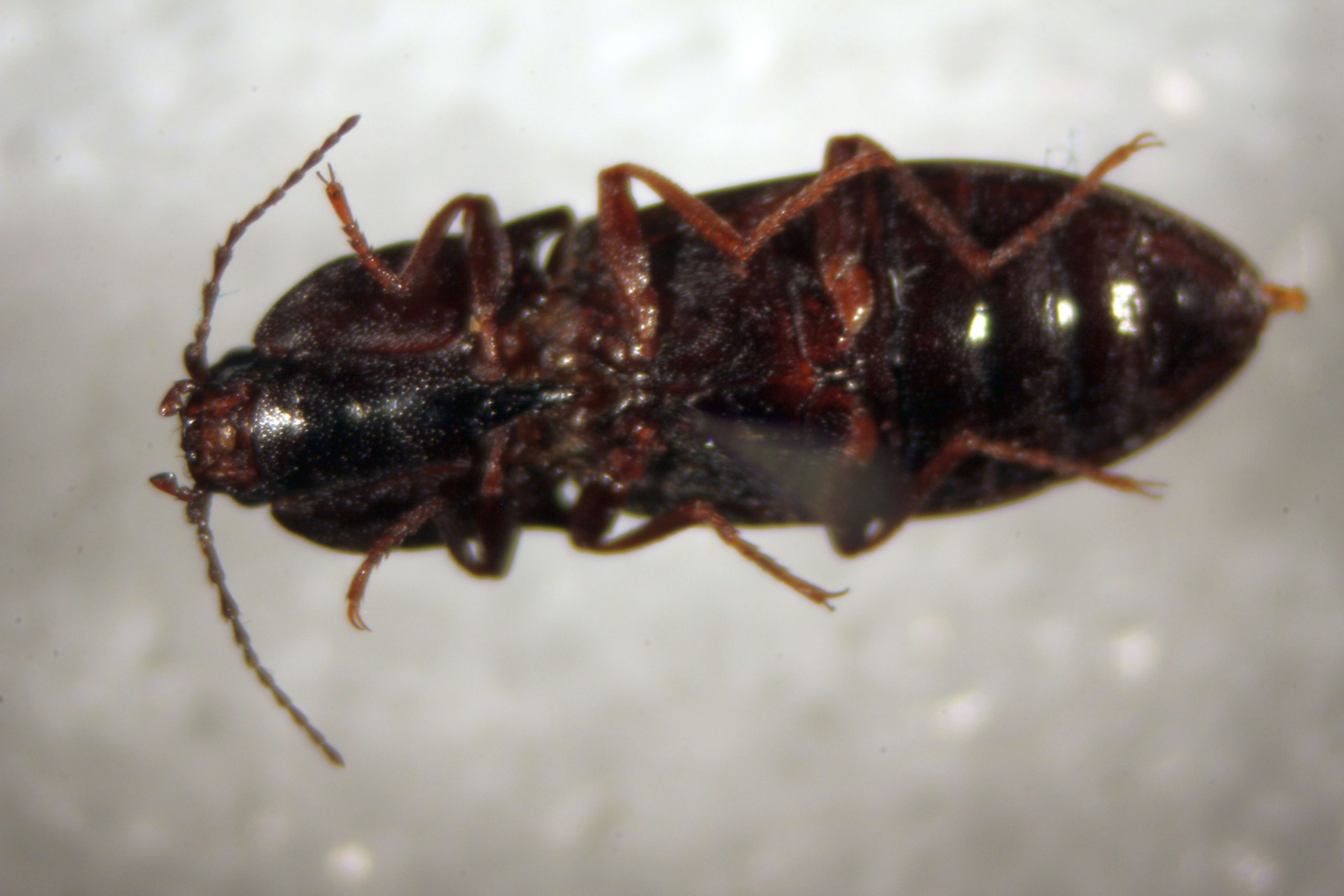
Lampyridae
Lampyridae are called lightningbugs or fireflies. Fireflies use luciferins, which are small, heterocyclic compounds, to produce “cold” light. The light is produced through enzyme-catalyzed oxidation, and an unstable, intermediate produce emits photons as it decays to its ground state. The light produced has no infrared or ultraviolet wavelengths. Some species use light to attract mates, and some even synchronize the flashes of light they produce. In one genus, females mimic the flash patterns of other species to lure in and eat those males. As larvae, they are distasteful to most predators, so larvae sometimes glow as a warning. We do have Lampyridae in northern BC, although most are non-luminescent species. They are characteristically quite dorsoventrally flattened beetles, with soft elytra and a flat, expanded pronotum that conceals the head from above.
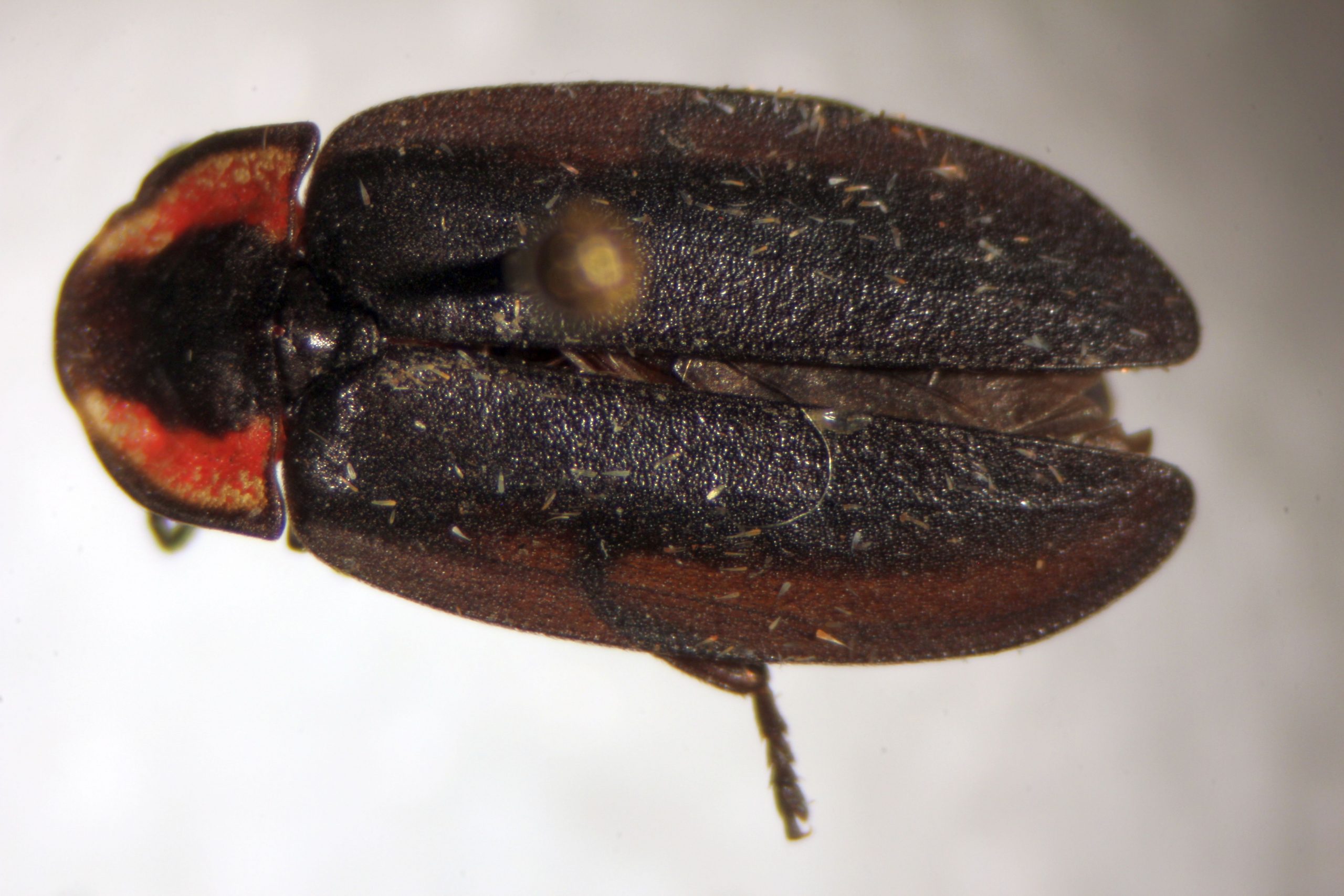
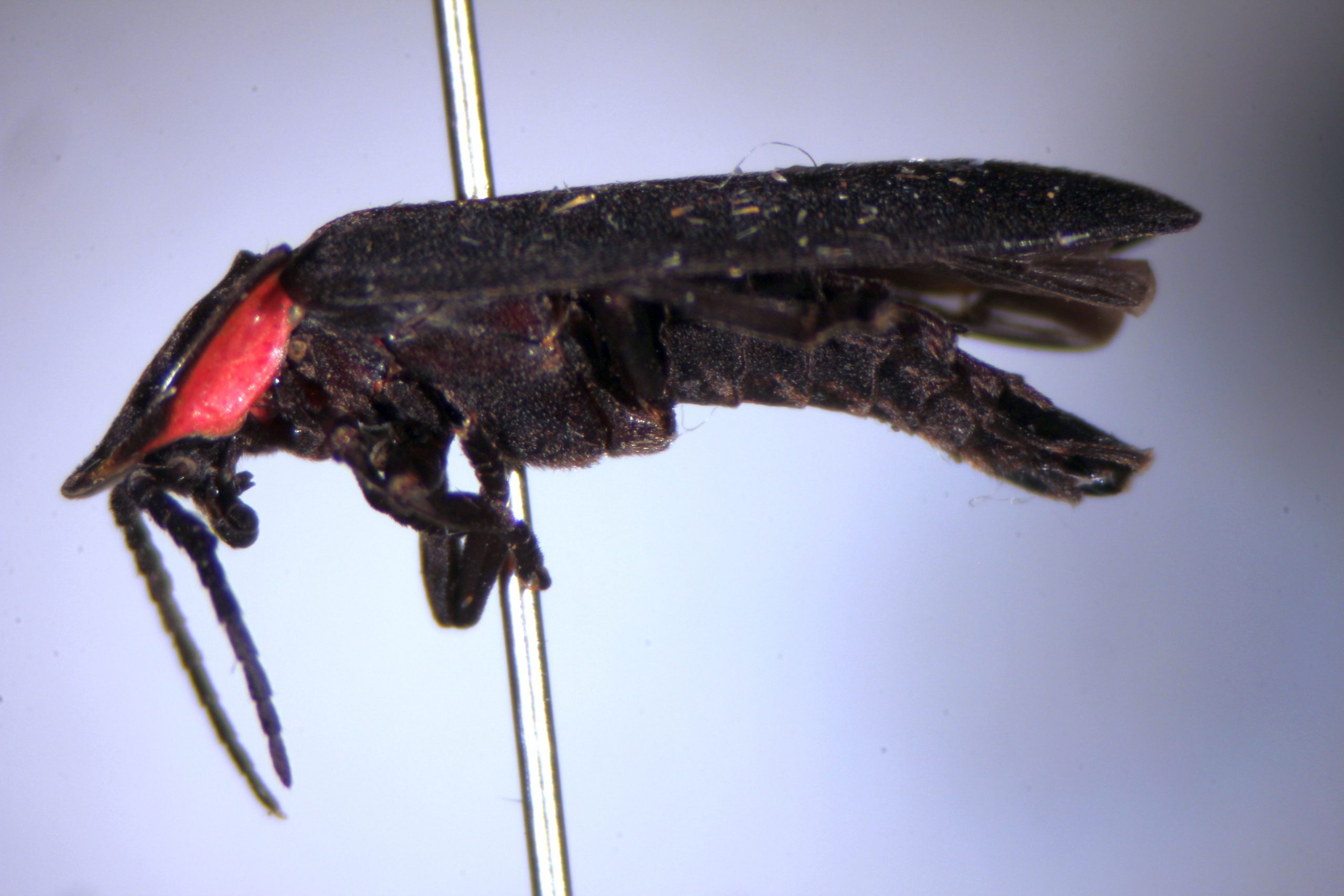
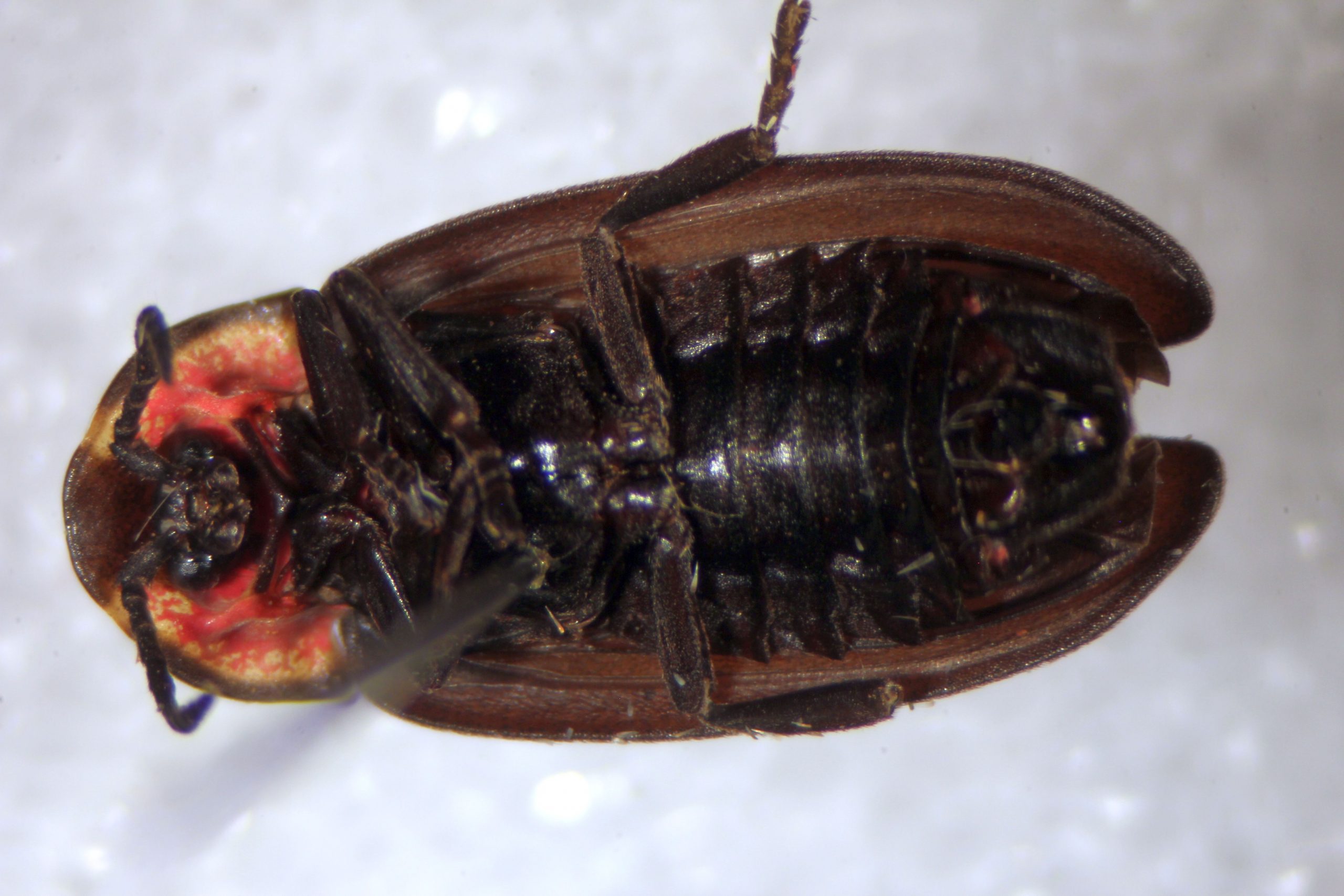
Dermestidae
Dermestidae, the skin beetles, are very important pests of stored animal products. They are, essentially detritivores that specialize on decaying animal material. They are also important pests in natural history museums, and can significantly damage insect, bird, and mammal specimens in particular. One species is used (with caution!) to clean skeletons, as both larvae and adults will consume all of the flesh, leaving behind clean bones. Dermestidae are very common here, especially the larder beetle, Dermestes lardarius. The hairy larvae of this insect are frequently found in kitchens and bathrooms feeding on scraps of food and skin. Adults have clubbed antennae, often hidden underneath the pronotum. We also have a small, roundish species, Anthrenus verbasci, the varied carpet beetle.
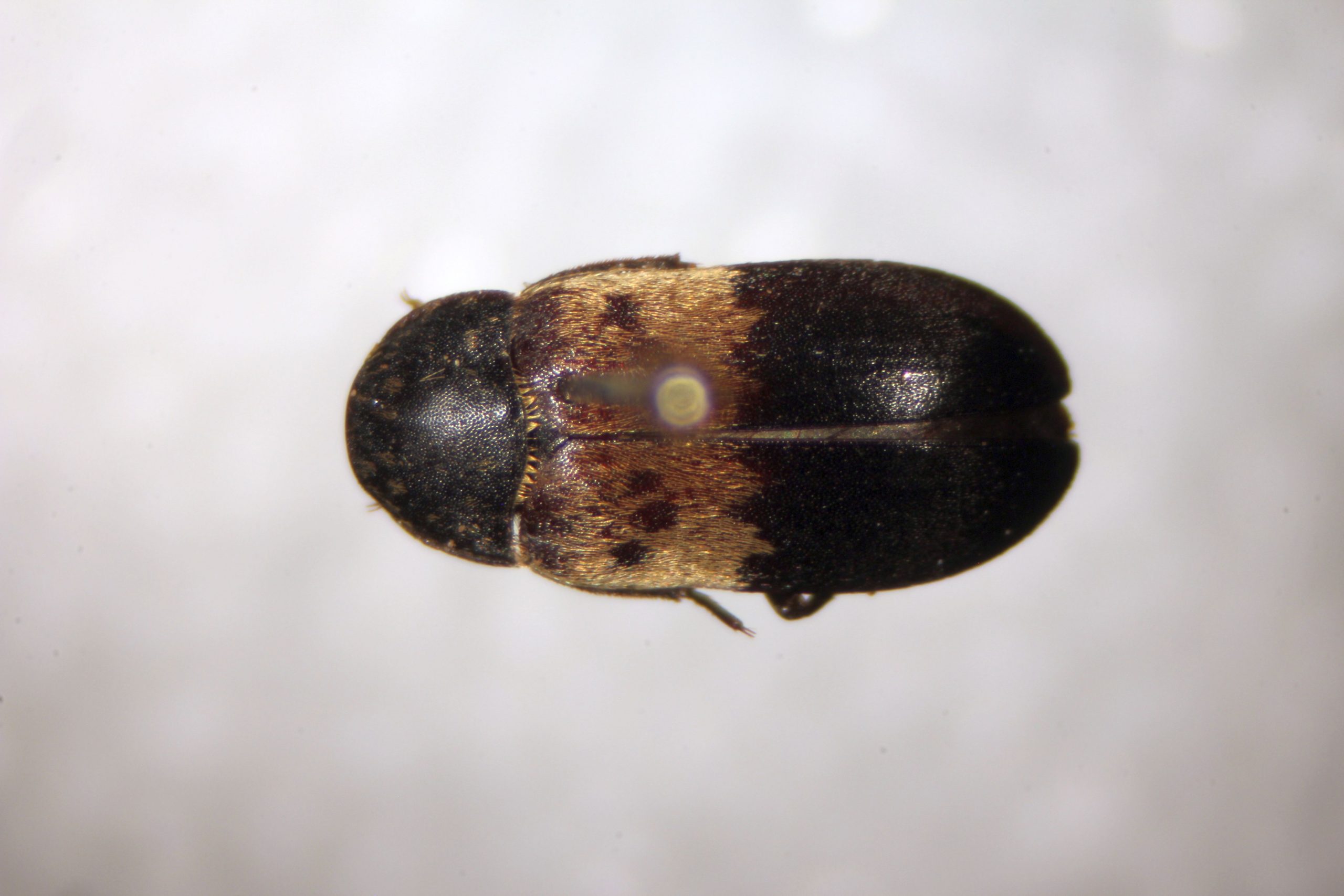
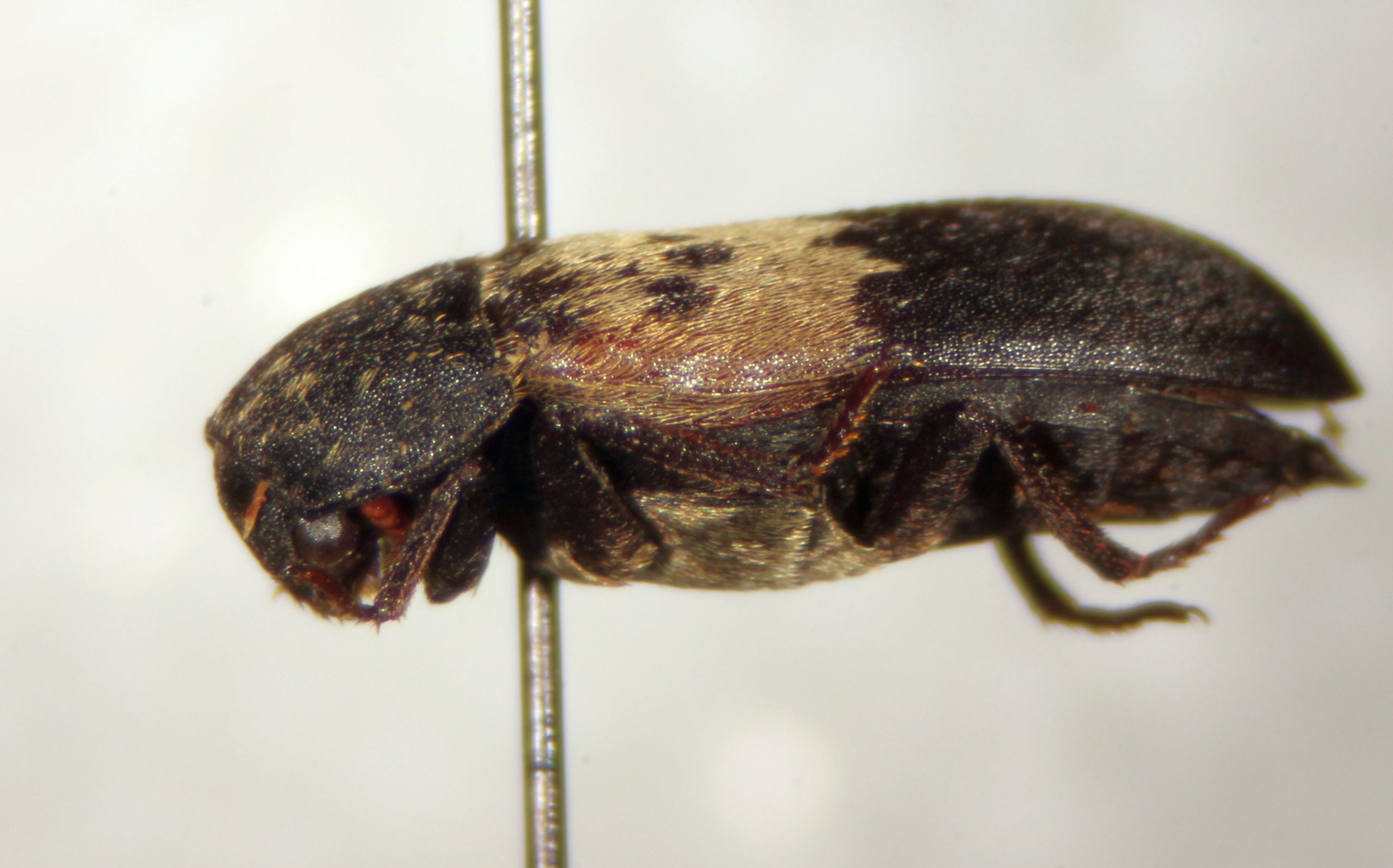
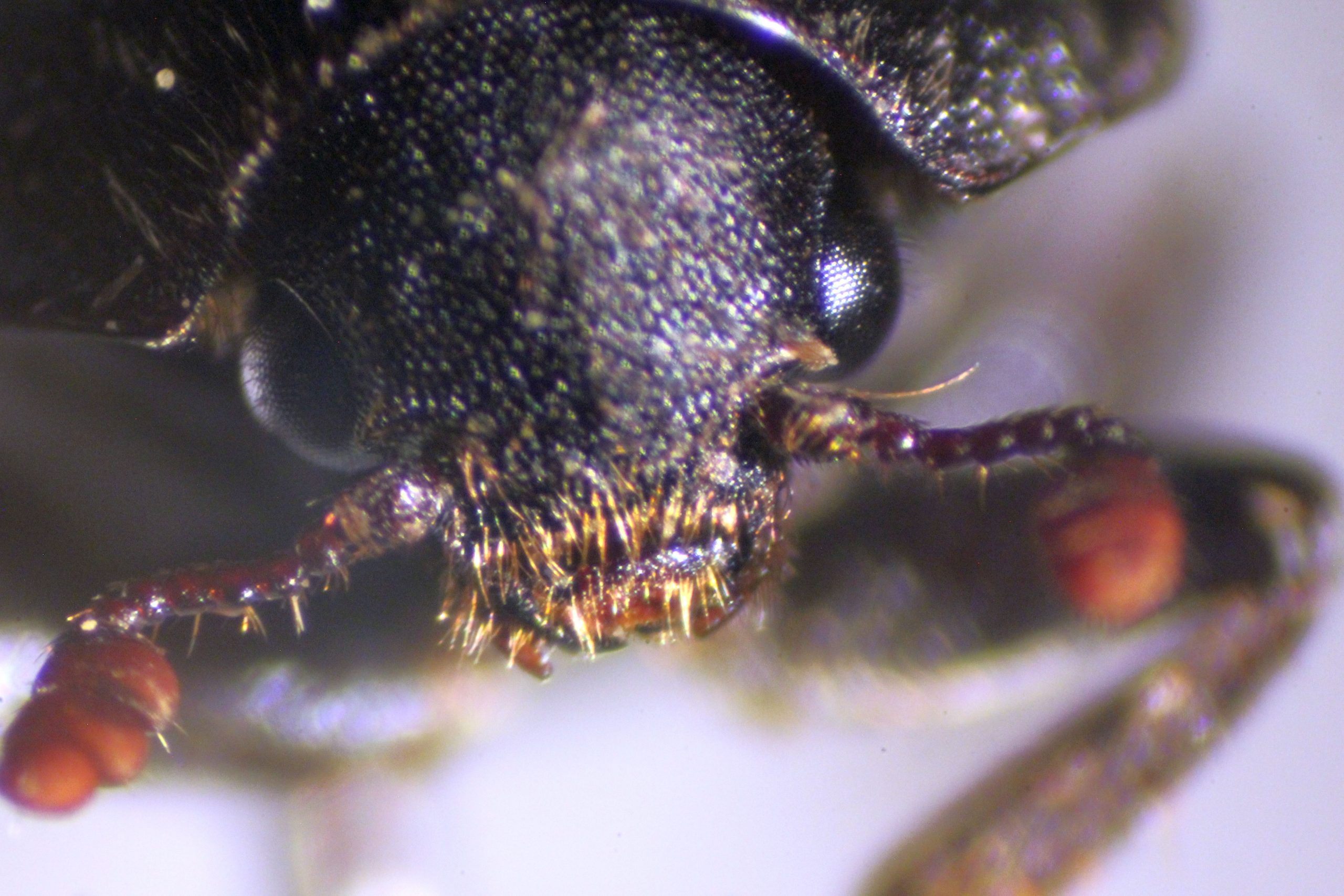
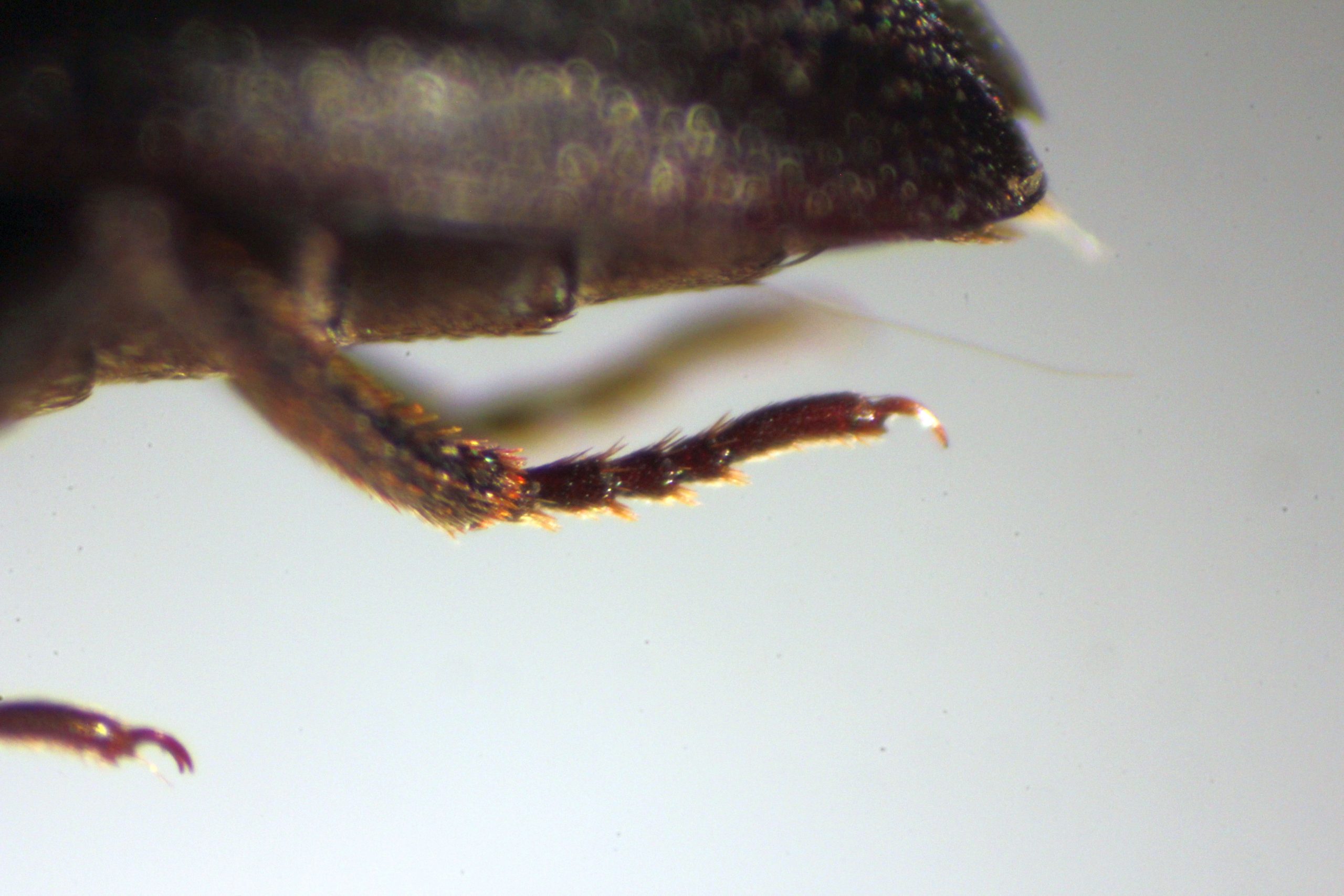
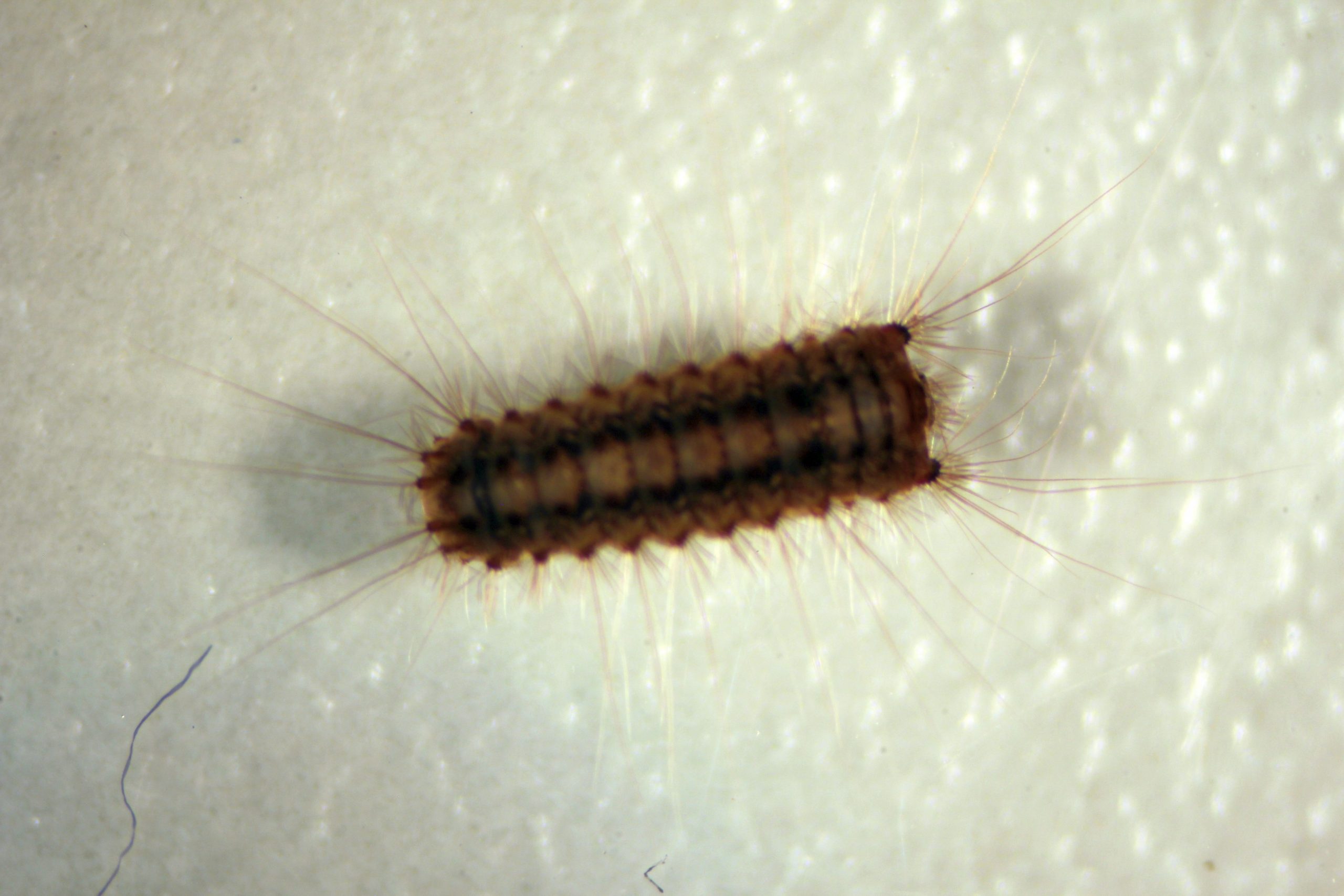
Ptinidae
Ptinidae includes cigarette beetles, drugstore beetles, spider beetles, and death-watch beetles. There are a number of important pests of stored plant products and wood, as you might have guessed from the common names. In the past, portions of this family have been called Anobiidae. Ptinidae is the current name, but it refers to a quite diverse collection of beetles. They seem to have few good, unifying characteristics, and will key out at several locations in your text.
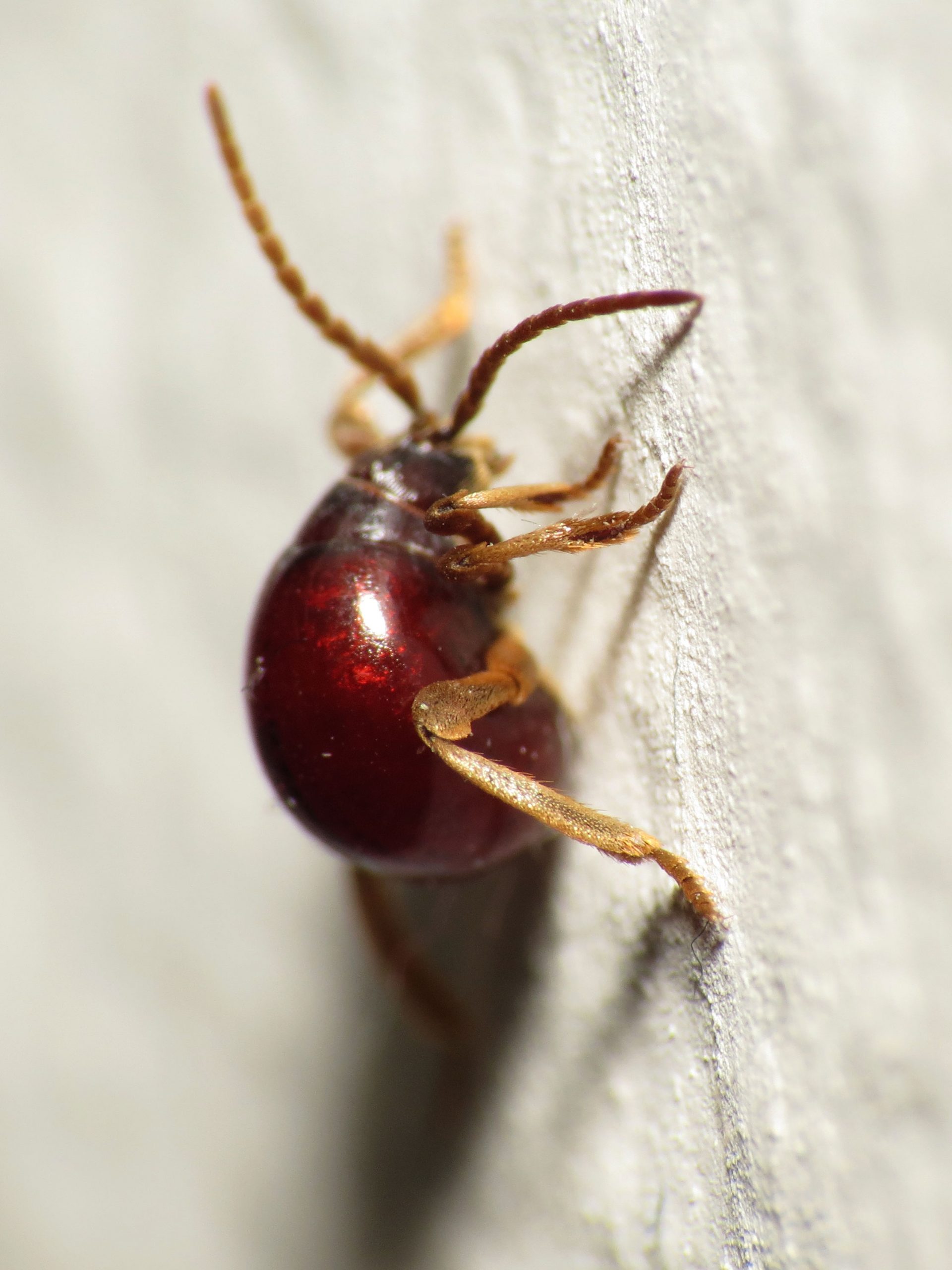
Spider beetle (Katja Schulz, CC BY 2.0 <https://creativecommons.org/licenses/by/2.0>, via Wikimedia Commons).
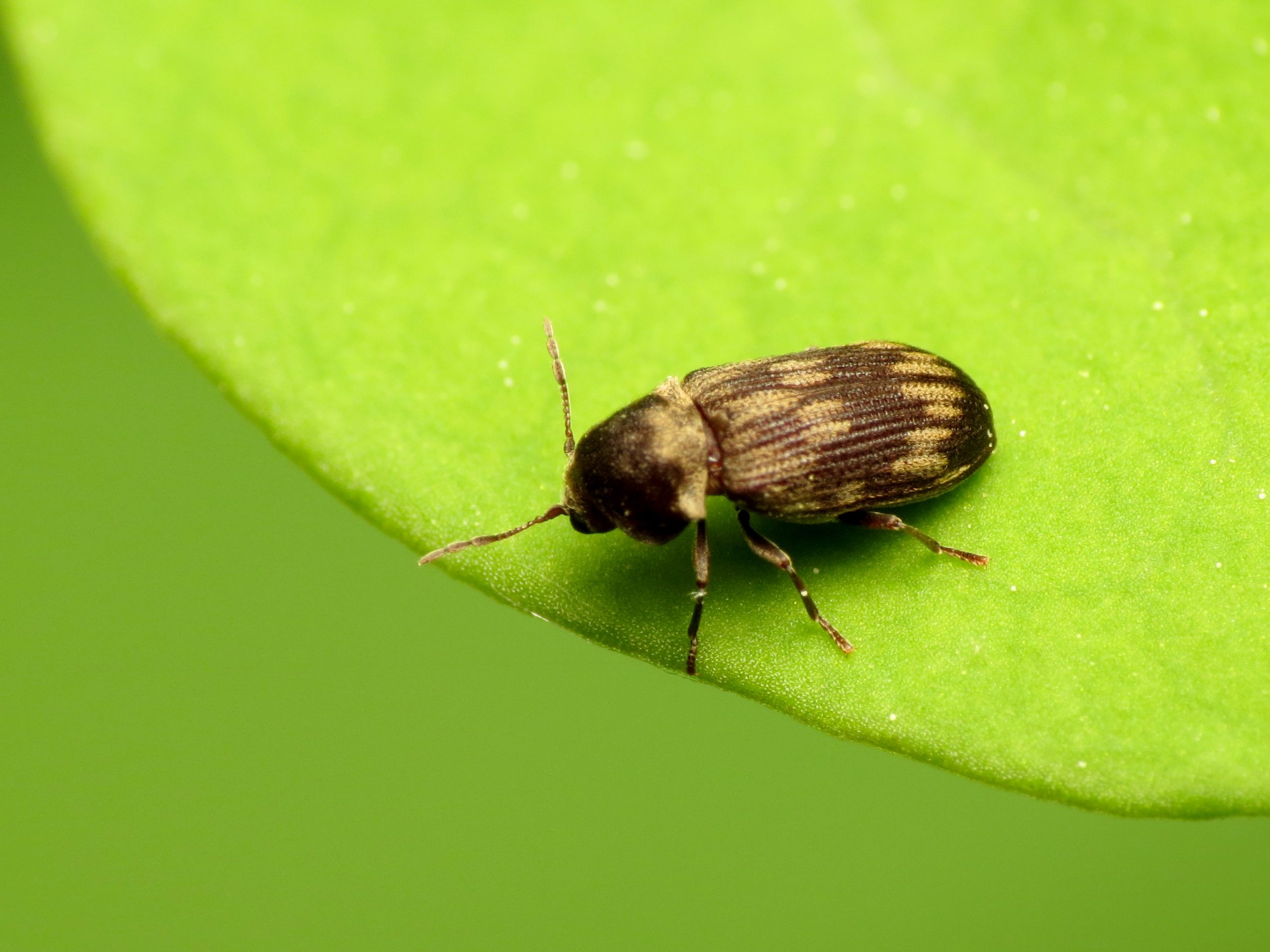
A death-watch beetle (Katja Schulz from Washington, D. C., USA, CC BY 2.0 <https://creativecommons.org/licenses/by/2.0>, via Wikimedia Commons).


Feedback/Errata